Make or buy
ICA Gruppen, a leading retailer in food, pharmacies, and real estate in the Nordic region, utilizes a strategic “make or buy” approach across various areas of its business to ensure reusability, efficient resource use, cost management, and a focus on sustainability. In this article we will learn how ICA uses make or buy as a strategy to determine when to develop in-house solutions (“make”) or purchase externally (“buy”), depending on which option offers the greatest benefit to the company, both in terms of cost and long-term value. We will also see how a clear make or buy strategy as ICA’s helps drive constant innovation to remain competitive and sustainable.
ICA’s Make or Buy strategy is essential to the company’s efforts to balance innovation, reusability, and environmental stewardship.
The make or buy strategy at ICA
ICA’s make or buy decision-making process evaluates several factors:
1. Cost Efficiency: Whether producing a solution internally is more cost-effective in the long run.
2. Core Competency: ICA focuses on internal development for areas that align with its core strengths, while outsourcing non-core activities.
3. Sustainability: ICA prioritizes reusability and environmental sustainability in both “make” and “buy” decisions, aligning with its commitment to a circular economy.
Examples of make and buy decisions
IT and Digital Platforms: In-House Development (Make)
ICA has developed several in-house digital platforms to manage customer engagement, e-commerce, and loyalty programs. These platforms are designed to be flexible and reusable, allowing ICA to update them as new technologies emerge without having to start from scratch. This approach not only saves costs over time but ensures that the systems are tightly integrated with ICA’s business operations, offering greater customization.
IT Infrastructure and Cloud Services: Buying External Solutions (Buy)
For its core IT infrastructure, ICA takes the “buy” approach by leveraging cloud services from external providers like Microsoft Azure. By outsourcing this function, ICA benefits from the scalability, security, and expertise of established cloud providers, while focusing its internal efforts on customer-facing innovations. The use of third-party cloud solutions also supports ICA’s goals of reducing energy consumption, as cloud data centers are often more energy-efficient than traditional setups.
Product Sourcing and Packaging
ICA applies the “make or buy” strategy extensively in product sourcing. When it comes to developing private label products, ICA evaluates whether in-house production or third-party suppliers are more cost-effective and sustainable. For example, ICA may develop proprietary food products when innovation or customization is needed but purchase sustainable packaging materials from specialized vendors who meet their environmental goals. This ensures that both production and packaging align with ICA’s sustainability commitments.
Supply Chain and Logistics
In logistics and supply chain operations, ICA opts to outsource much of its transportation and warehousing to third-party logistics providers. By partnering with specialized companies, ICA can optimize its supply chain operations without the need for heavy internal investment. This allows ICA to reduce its operational costs while benefiting from external expertise. However, for unique needs such as sustainable delivery models, ICA may develop internal logistics solutions, ensuring they meet its eco-friendly goals.
Store Infrastructure and Real Estate
ICA’s “make or buy” decision also extends to its store infrastructure and real estate operations. The company may invest in designing and developing innovative energy-saving systems for its stores (make), but in many cases, it leases or buys pre-designed equipment or properties (buy), especially when such solutions are more cost-effective or readily available from the market.
Sustainability Initiatives
ICA’s commitment to sustainability plays a key role in its make or buy decisions. When developing recycling or waste reduction initiatives, ICA might create in-house solutions (make) to control and tailor these efforts to their specific operations. However, for broader sustainability solutions such as renewable energy or green supply chain initiatives, they often collaborate with external providers who bring specialized expertise (buy).
Reusability as a core principle
Across its operations, ICA emphasizes reusability. Whether it’s developing in-house platforms that can be adapted for future initiatives or selecting packaging that can be recycled, reusability helps ICA optimize resource use, cut costs, and meet its sustainability targets. This approach supports ICA’s broader goals of reducing waste and promoting a circular economy in all aspects of its business.
Conclusion
By applying the “make or buy” strategy across its organization, ICA ensures that its resources are used in the most efficient and impactful way. This strategic decision-making process allows ICA to focus on innovation where it matters most, while leveraging external expertise to fill in gaps, ensuring both cost savings and alignment with the company’s long-term environmental goals.
Reflection:
Does your organization have a clear make or buy strategy that brings similar benefits as the ones ICA enjoy?
Key takeaways
What can we learn from ICA’s make or buy strategy?
MAKE: only internally when it adds value
ICA chooses to develop solutions in-house when it requires tight integration with business operations, high flexibility, or innovation, such as with sustainability initiatives. Do you?
BUY: externally for efficiency and expertise
ICA leverages external partners in areas that are not core to its competitive edge, such as cloud services, packaging materials, or logistics. This allows access to the latest technologies and operational efficiencies without overextending internal resources. Do you?
Reusability as a design principle
ICA prioritizes building and selecting solutions that can be reused or adapted for future use, whether in IT, packaging, or infrastructure, supporting cost savings and environmental impact reduction. Do you?
A strategy aligning with core values
ICA stays true to its core value of sustainability. Every make or buy decision is evaluated through the lens of sustainability. ICA actively seeks partners and solutions that align with its green objectives and circular economy goals. Do you?
Strategic focus on core competencies
ICA’s approach emphasizes doing what they do best in-house and outsourcing the rest. This focus allows for deeper innovation in key areas while maintaining operational efficiency. While outsourcing non-core ICA frees up time for innovation within their own unique selling point (USP). Do you?
Dynamic and adaptive decision-making
ICA doesn’t rigidly stick to one approach. Instead, it dynamically assesses each initiative or need to determine the smartest path at any given time, balancing cost, expertise, sustainability, and reusability. Do you?
Do you want to learn how to build an effective “make or buy” strategy?


